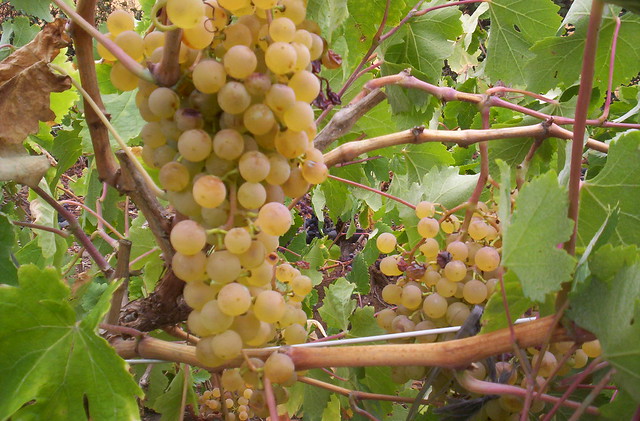 |
| Grapes growing in the backyard |
On New Year's Eve, Nochevieja (which translates better to Old Year's Night), or San Silvestre as it is called in Spain, celebrations revolve around the eating of the grapes at midnight. The idea is to eat twelve Uvas de la Suerte ("lucky" grapes), one grape on each chime of the clock - all suitably, and necessarily, washed down with Cava: Spanish bubbly - a tradition that's believed to have come from the ancient wine-growers. One way to encourage consumption, I guess.
The New Year is heralded in Spain via the twelve chimes from the Puerta del Sol in Madrid: an hour later in the Canaries (actually, the same time as the UK) (confusingly, twice on TV, if you watch a Spanish channel and then a Canarian one) or locally, mostly with those of the Cabildo (Island Corporation) in Santa Cruz in Tenerife or their counterpart in Las Palmas de Gran Canaria.
New Year's Eve is a night for going out. Right after the chimes, there will usually be fireworks and in many places, there will be a street-party with dancing to a Salsa band or a disco. Another custom, or superstition, but even those who aren't superstitious will probably observe it "just in case", is to wear new clothes for this party, which symbolises starting the year from scratch. You should also wear red underwear because it's the colour of happiness and good luck.
In Santa Cruz, the Plaza de España will be packed with people and atmosphere if you're looking for fun, as will the church square in Los Cristianos, in the south.
But most large and even small towns have New Years' parties. In Garachico, we've danced to an open air disco (yeah, Jan 1 in the open air, at night, te he) in the town square in front of the bandstand and watched the fireworks set off from the Town Hall roof. There were "party bags" (consisting of silly hat, noise makers and packet of grapes) laid on for anyone who turned up. And you get to keep company with the big fish in these small ponds, as the Mayor was host.





 After more than 20 years, posts here will now only be occasional (
After more than 20 years, posts here will now only be occasional (